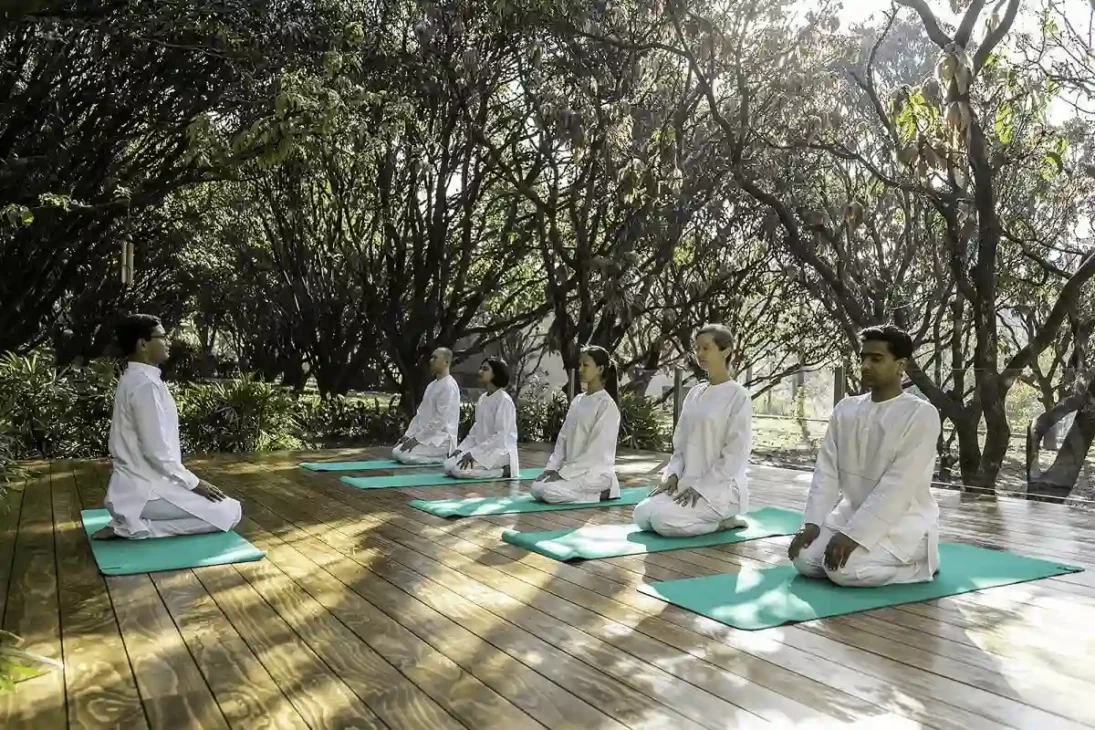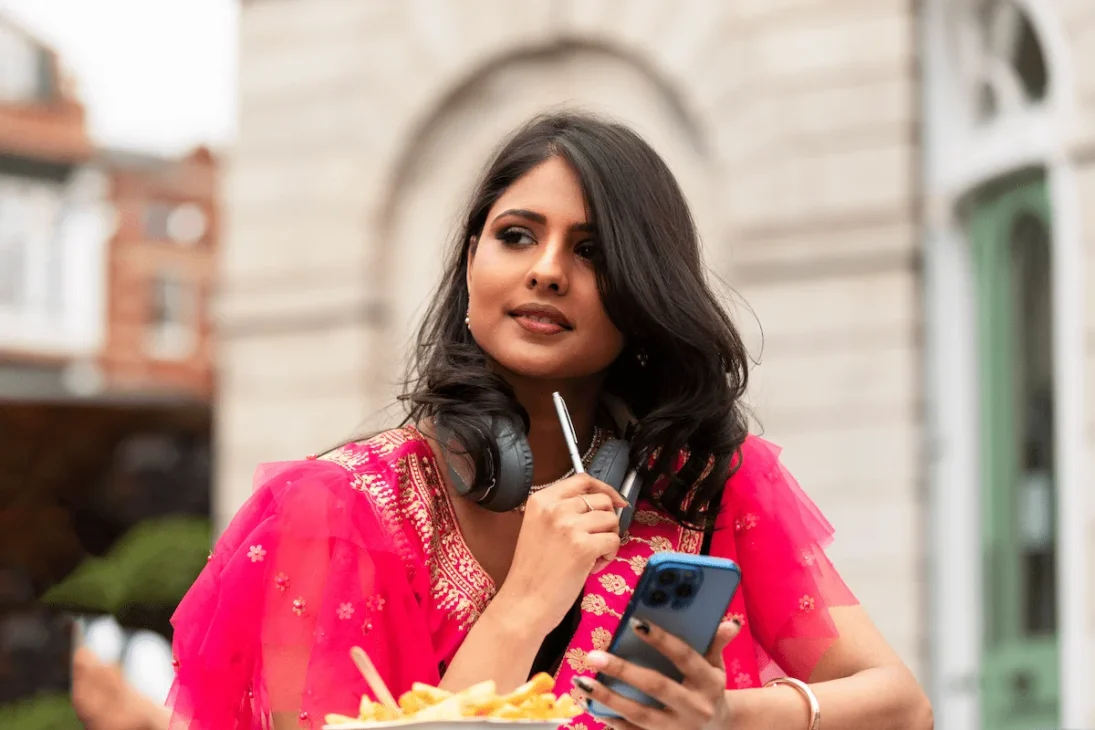Cultural Rituals in India: How Traditions Shape Modern Life

The aroma of fresh jasmine and the rhythmic clang of temple bells greet the morning. Steam rises from a cup of chai, marking the beginning of a day in India. Cultural rituals in India are not relics of the past; they are living practices that structure daily life. They influence professional routines, support wellness, and even adapt to modern technology.
From the quiet devotion of morning prayers to the vibrant energy of festivals, these traditions continue to shape behavior and foster community. They also maintain a sense of identity, guiding millions as they navigate both ancient customs and contemporary life.
Morning Rituals: Anchoring the Day
In India, mornings are treated as sacred, often beginning during Brahma Muhurta (sacred dawn), roughly 90 minutes before sunrise. This period is considered ideal for spiritual and mental alignment, as the mind is naturally calm and the environment is serene. Many Indians begin their day with gratitude exercises, consciously acknowledging life and setting intentions. A practice shown to support emotional resilience, focus, and a sense of purpose.
Cleansing rituals in India go beyond hygiene. Practices like tongue scraping remove overnight toxins, oil pulling strengthens teeth and detoxifies the mouth, and drinking warm water—sometimes from a copper vessel—rehydrates and stimulates digestion, offering Ayurvedic (traditional Indian system of medicine) benefits.
These are often followed by physical and mental preparation routines such as meditation and abhyanga (self-massage with warm herbal oils), which enhance circulation, calm the nervous system, and prime the body for the day ahead.
Even in urban environments, these rituals endure and adapt. Shrines, incense sticks, and morning mantras are seamlessly integrated into apartments, illustrating how cultural rituals in India maintain their grounding role in daily life. By balancing centuries-old practices with modern routines, these morning rituals help individuals start the day with clarity, focus, and a connection to tradition.
Meals and Culinary Traditions

Meals are more than sustenance; they are expressions of culture, community, and spirituality. Cultural rituals in India shape the way food is prepared, served, and consumed. Many households begin meals with small offerings to deities (gods or divine beings), reflecting gratitude and mindfulness.
Cooking with seasonal ingredients and fasting practices also mark the rhythms of the lunar calendar. Eating with hands, a long-standing tradition, encourages a tactile connection to food and enhances awareness of flavors and textures.
The diversity of Indian cuisine mirrors the country’s regional and cultural variety. Northern dishes like butter chicken, biryani, and paneer tikka (grilled cottage cheese) are rich and aromatic. These meals reflect a cultural, artistic, and social practice that flourished during the Mughal Empire in India (16th–19th century).
Southern staples like dosa, idli, and coconut-based curries focus on rice, spices, and fresh coconut. Eastern regions highlight seafood, lentils, and mustard-infused flavors, and Western cuisine balances sweet, savory, and spicy elements with dishes like vada pav or “Indian burger” and Gujarati thali (traditional Indian platter).
Street food culture adds another layer, offering affordable, flavorful options such as samosas, pani puri, and chaats. While home-cooked meals preserve recipes passed through generations, from simple dal chawal to elaborate festival thalis. These culinary practices reinforce family bonds, celebrate heritage, and connect everyday eating to centuries-old traditions.
Festivals and Social Gatherings
Festivals and rituals are far more than brief celebrations; they are vital threads in the social and cultural fabric. Cultural rituals in India mark the passage of the year, connect communities, and reinforce shared values. Major festivals such as Diwali, with its glowing lamps, and Holi, bursting with colors, carry deep spiritual meaning while strengthening family bonds and linking participants to historical and mythological narratives.
Each festival draws from centuries-old stories in the Puranas (ancient Hindu texts). They offer insight into the values, traditions, and ethical lessons that Indians commemorate.
These events also foster social cohesion. Gatherings during festivals offer opportunities for community interaction, storytelling, and the transmission of cultural knowledge from elders to younger generations.
Even daily routines carry subtle ritualistic elements, and street vendors follow time-honored schedules: tea stalls serving chai at the same hour, along with communal prayers and shared meals. Such practices cultivate consistency, trust, and connection, anchoring society in rhythm and shared experience.
Festivals extend beyond religious boundaries, with people of different faiths and backgrounds participating, as seen in Holi celebrations attended by non-Hindus or the communal iftar meals during Eid-ul-Fitr.
Rituals in Work and Professional Life

Even as India’s corporate sector accelerates with tight deadlines and globalized workflows, cultural rituals in India continue to shape professional life. Many offices observe brief prayers at the start of the day or visit nearby temples for blessings. Blending spiritual mindfulness with daily tasks.
Seasonal rituals, such as offerings of foods or flowers to mark the beginning of the financial year or auspicious project launches, reflect centuries-old beliefs in aligning work with cosmic and cultural rhythms.
These practices coexist with modern values like teamwork, hierarchy, and adaptability. Employees often draw focus and patience from such rituals, reinforcing discipline and a sense of purpose while navigating the demands of fast-paced industries.
In this way, Indian traditions offer a unique integration of productivity and spirituality. It shows that professional rigor and cultural heritage can enrich one another.
Wellness and Spiritual Practices

For countless Indians, cultural rituals in India extend beyond social and professional life into daily wellness routines. Practices like yoga, meditation, and Ayurveda, or “knowledge of life,” are integral to maintaining physical health, mental clarity, and spiritual balance.
Morning asanas and guided breathing exercises energize the body and reduce stress, while Ayurvedic routines such as herbal tonics, oil massages, and dosha-specific diets promote holistic well-being rooted in centuries-old traditions.
These rituals and their benefits have gained global recognition. Yoga studios and Ayurvedic clinics across the West adopt these practices to address chronic illnesses, enhance mental resilience, and foster mind-body harmony.
Even in fast-paced, digital-first cities, apps, online communities, and virtual classes allow practitioners to maintain consistency, demonstrating that wellness rituals can evolve while preserving their traditional essence.
Technology Meets Tradition

In modern India, digital innovation and cultural heritage coexist, creating new ways for rituals and traditions to thrive. Online pujas (virtual Hindu religious ceremonies), virtual community festivals, and astrology apps allow younger generations to participate in practices that were once confined to temples or local gatherings.
The Ministry of Culture has embraced digital platforms to preserve and promote Indian art, culture, and heritage, including online exhibitions, virtual museums, and streaming of cultural performances, making them accessible to a wider audience.
This digital integration is not limited to performing arts; everyday cultural rituals adapt as well. Virtual celebrations preserve seasonal and religious observances. Apps and live streams enable participation across geographies. Platforms like YouTube, Instagram, and dedicated event portals democratize tradition, making it accessible to audiences who might otherwise be distant from cultural hubs.
Technology thus acts as a bridge, maintaining the authenticity of rituals while modernizing the ways people experience them, ensuring that India’s rich cultural heritage remains vibrant, relevant, and participatory in a fast-paced, mobile world.
How Cultural Rituals in India Shape Daily Life
Cultural rituals in India are more than ceremonial acts; they are the threads weaving continuity, identity, and balance into daily life. From the quiet reflection of morning prayers to the vibrant energy of festivals, these practices harmonize tradition and modernity, grounding individuals amid rapid change.
Observing India’s daily rituals offers more than cultural insight; it reveals the enduring power of heritage to shape how life is lived, celebrated, and understood.
FAQs About Cultural Rituals in India
What does the red dot on the forehead (bindi) mean?
Traditionally, the red bindi symbolizes spiritual focus, protection, and, for married women, prosperity and honor. Today, it’s also worn as a decorative accessory, blending cultural tradition with modern style.
Why do people take off their shoes before entering Indian homes or temples?
It’s a sign of respect and cleanliness. Shoes carry dirt and impurities from outside, so leaving them at the door helps keep sacred and home spaces pure. The act also symbolizes humility, mindfulness, and equality, whether in temples, homes, or even schools and yoga centers.
Why do some Indians eat with their hands instead of utensils?
It’s a tradition rooted in culture and Ayurveda. Eating with hands is seen as a way to connect more closely with food, engage the senses, and promote mindful eating. According to Ayurveda, the fingertips help signal digestion and improve awareness of taste and texture. With proper handwashing, it’s also considered just as hygienic as using utensils.
Why do Indian weddings last several days?
Because they include multiple ceremonies, each with its own cultural and religious meaning. Events like the sangeet (music night), mehndi (henna), haldi (turmeric blessing), and the wedding itself can’t all fit into one day. Spreading them over three or more days allows families to honor traditions, celebrate with different groups of guests, and create a festive, unforgettable experience.
Why do people touch elders’ feet in India?
It’s a traditional gesture of respect called Charan Sparsh (feet-touching). By bowing down, younger people show humility and acknowledge the wisdom, age, and experience of their elders. In return, elders place their hands on the person’s head to give blessings. Culturally, it symbolizes receiving guidance and good energy, while some also believe it has spiritual and even health benefits.


